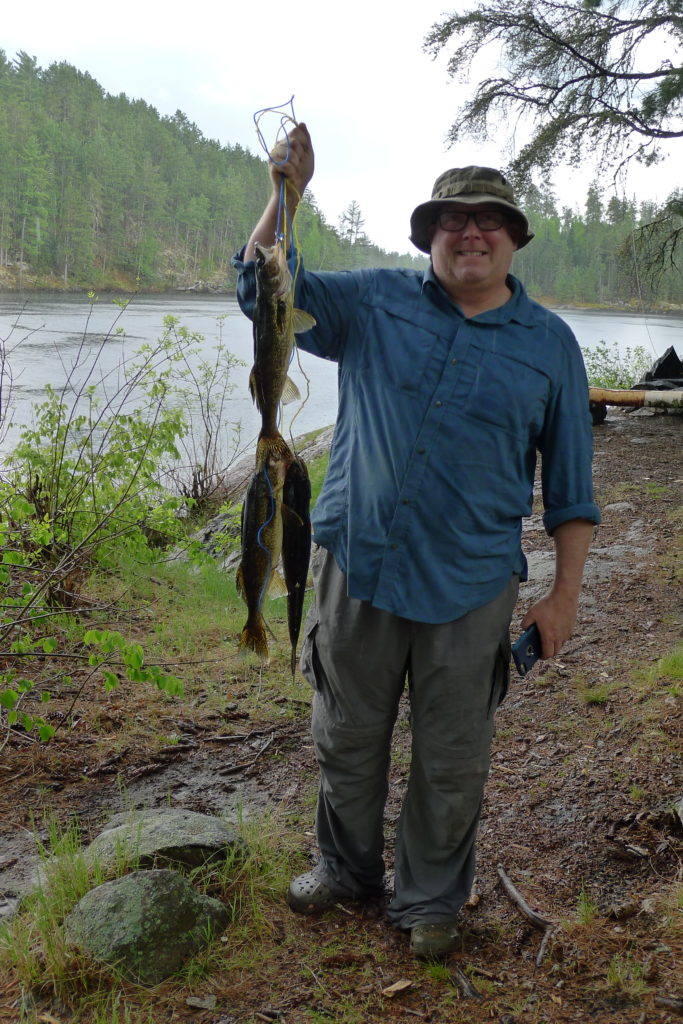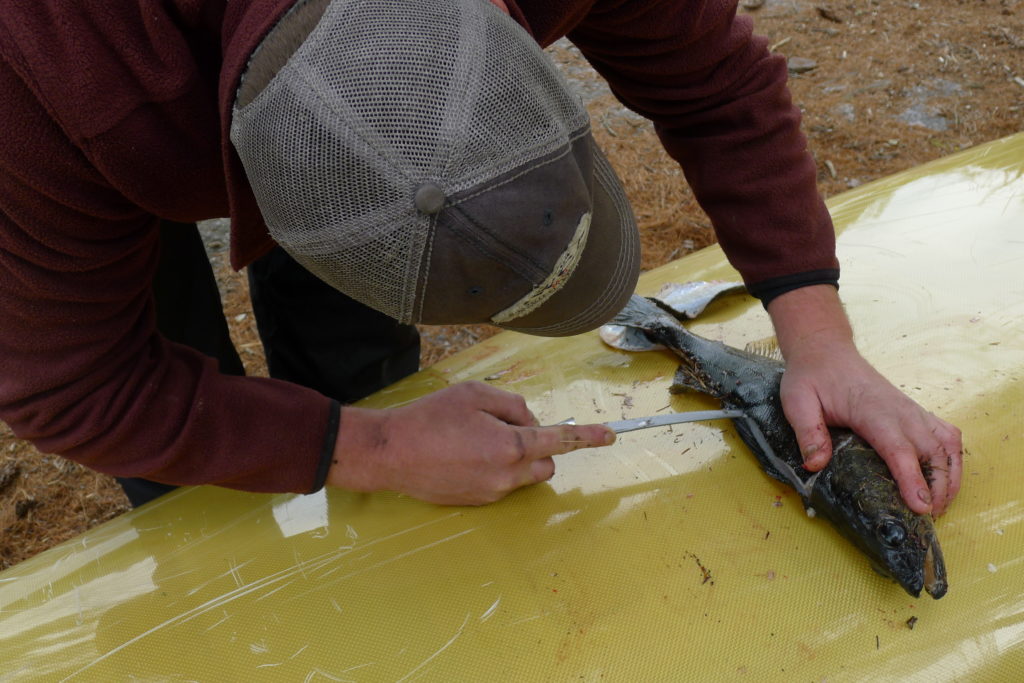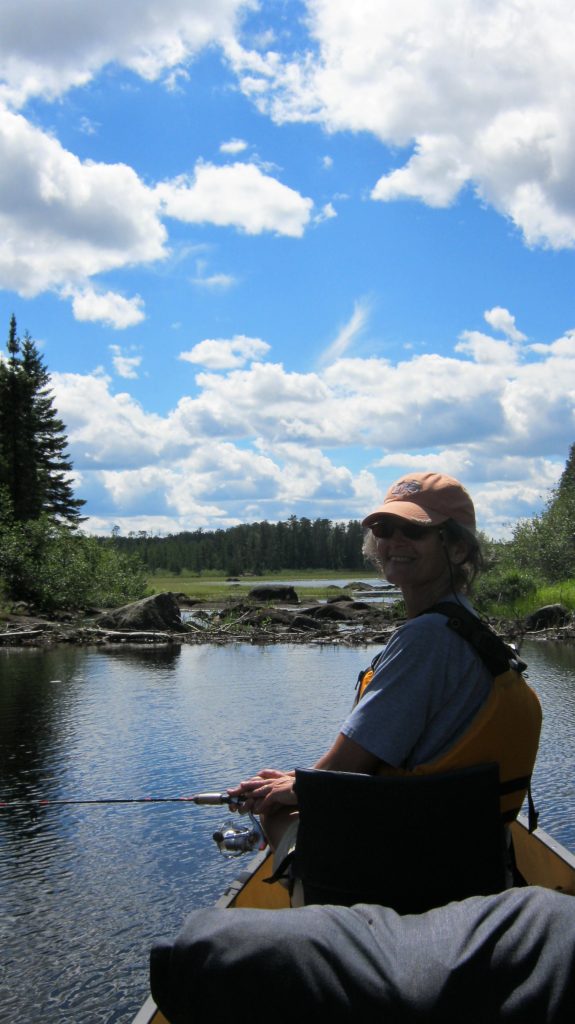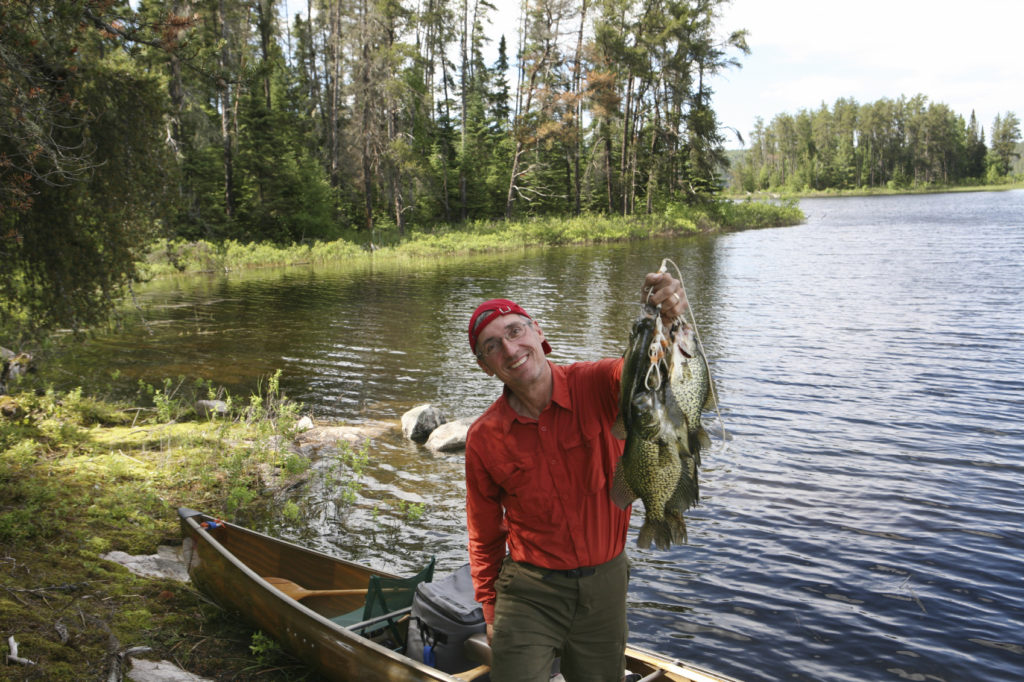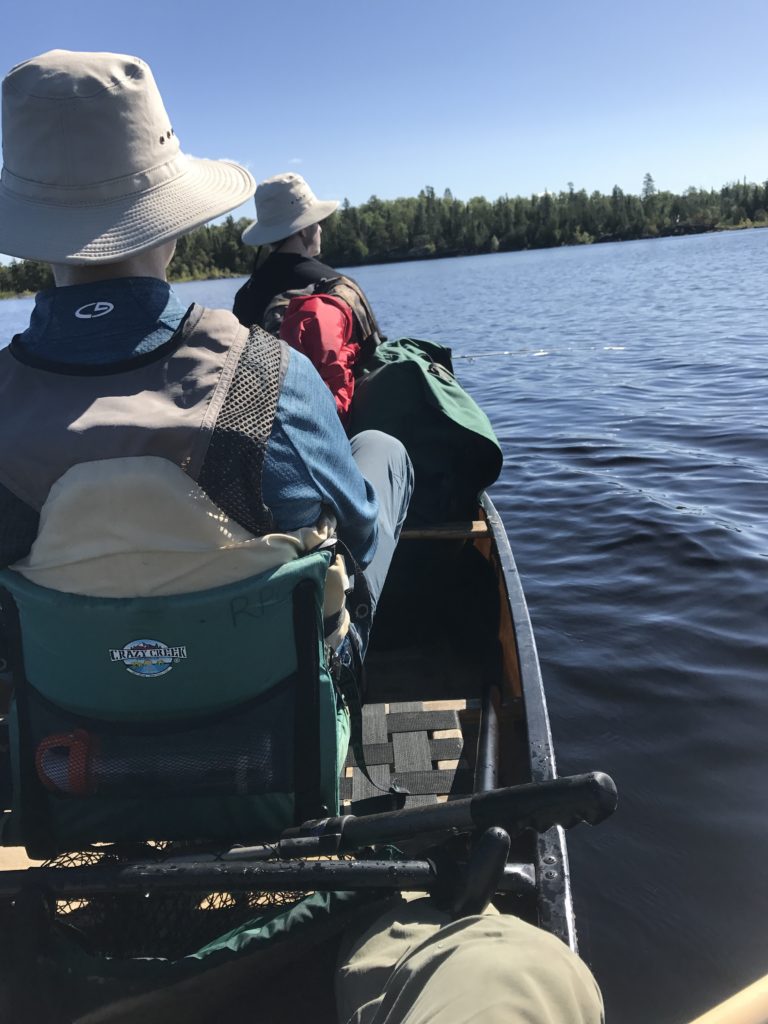River Point Outfitting Co.
BWCA FISHING TIPS FOR SUCCESSFUL FISHING TRIPS
BWCA fishing tips are especially relevant regarding the variety of fish species that call the famous Boundary Waters their home. However, four species are predominant: walleye, northern pike, smallmouth bass, and lake trout. A brief description of each species along with some BWCA fishing tips will serve to provide a foundation for your Boundary Waters fishing trip.
BWCA FISHING TIPS FOR WALLEYE
Walleye is definitely the most sought after BWCA fishing trip species because of its light, delicate flavor and thick white fillets with a delicious flaky texture, making it the most desirable for sumptuous shore lunches. It is has an elusive nature that often can be tricky to catch, so when it is finally landed it is considered a great prize.
Usually, walleye spawn in mid-May, depending upon the spring thaw and warm-up, and usually occurs in moving waters in sandy, gravel type bottoms, and often at night. Usually, pre-spawn walleyes are caught in 6 to 15 feet of water in the BWCA below spawning areas. At this time, live bait with slow moving jigs work usually well, and a slow crank bait will also catch a few walleyes. Please consider releasing spawning females on your BWCA fishing trip.
After the spawn, focus should be on rocky, gravel shallow points and shorelines to begin with, and then deeper rocky points and reef areas as temperatures rise and summer progresses. Best BWCA fishing tips for catching walleye is to pay attention to your tackle choices and colors. Spinners in mid range sizes; ⅛ oz, ¼ oz, and ⅜ oz jigs are suggested. Live bait with jigs and crank baits are quite productive. In the heat of summer, walleye like weedy areas to provide shade and cover. You’ll need tackle with brighter shades of colors such as fluorescent orange, pink, lime green, and yellow, especially if the lake is naturally a brownish, root beer color. In the fall, check out the narrows between lakes, and the deeper points with a bit of current. Give a try with larger minnow type baits, or try jigging with live bait in these areas.
BWCA Fishing Tips for Northern Pike
Northern pike taste just about as good as the prized walleye with their chunky white fillets and great taste. This species is one of the easiest to catch because they are ravenous predator and they will take just about any lure or bait when out on your BWCA fishing trip.
Usually by the end of April to early May, or as soon as the ice melts from the lakes, northern pike will have spawned in the shallow, soft-bottoms of bays which may have a creek or stream feeding into it. Spoons that are light weight, floating plugs, and buzz and spinner baits work well.
As it begins to warm up, pike are still in the shallows, but begin their journey into deeper waters. In later May and June, check out areas for best BWCA fishing, such as points of land that are entrances into shallow bays that abut deeper waters. Change to larger bait size and lures, as summer progresses. Dare devils are a good choice, as well as Mepps spinners, rapalas and other larger lures.
BWCA fishing tips for northern pike when the water temps are much warmer, are deep diving crank baits and get closer to deep weeds since the larger pike like cooler water temperatures. As fall approaches, the large pike move into shallow waters. Use large spoons in various colors, buck tails, crank baits, etc. when the weeds begin to die off.
One of the most important BWCA fishing tips for catching northern pike is to have steel leaders from 6-12 inches in length.
BWCA Fishing Tips for Smallmouth Bass
Smallmouth are a brassy brown color and are an extremely strong fish and is often called a scrappy fighter. Due to this behavior they are a feisty fish to catch.
They spawn generally in late May to mid June dependent upon water temperatures. Expect to find pre-spawn smallmouth bass in 6-12 feet of water, and then they move into shallow waters closer to spawning. Small, slow moving baits such as rapalas, jigs and small hari bugs, spinner baits will work well. But, as soon as the water temps begin to rise, this pattern of BWCA fishing disappears. It is a good idea to catch and release any spawning female bass. Following the spawn, females go deep, and males are easier to catch as they will hit on lures often repeatedly.
Best BWCA fishing tips for smallmouth bass after the spawn is to use crank baits, surface lures, Mepps spinner baits and other spinners, jigs and live bait. Using leeches on your BWCA fishing trip is a good idea as they are a more durable live bait and are easy to carry when portaging.
Mid-summer brings bass into the shallow rock piles areas, points, reefs, and shorelines with large rocks, and even some weedy areas. Try top-water techniques. Historically, the best smallmouth BWCA fishing time is late May through June and early July. By later summer, bass will move to deeper water and the deep fishing tactics work best. They also school up and locating them can be harder.
BWCA Fishing Tips for Lake Trout
This species of fish spawn in the fall. They are a cold water species and are the easiest to catch in early spring which is May to June and once again in the September. Best BWCA fishing tips at this time of the year is to use a flashy spoon or diving crank bait as you paddle through a lake. Try a variety of colors.Try Mepps spinner baits and other spinners in the early season.
As the water warms up in the summer, you’ll need to switch it up for your BWCA fishing trip success. Lake trout will dive deep seeking the colder and more oxygenated water. Jigging spoons, blade baits, and heavy jigs fishing vertically are quite effective for catching lake trout during this time. Feather and hair jigs in ½ oz to 1 oz weights tend to work well in a variety of colors such as black, white, yellow, and red.
Tackle
Remember to pack only the BWCA fishing tackle you truly will use, and keep it light and in a small container that can be easily transported during your fishing trip.
A full line of tried and true Boundary Waters fishing lures are carried in River Point Outfitting Co,’s Bait & Tackle Shop. Spoons, spinner baits, Rapalas, jigs, spinners, rubber worms, hula poppers, steel leaders, sinkers, and large casting lures are items you should have in your tackle box.
Spin casting, regular casting rods, and fly rods are great. Consider 10-20 pound test line for casting and 6-12 pound test line for spinning. There should be a balance of weight between the rod, reel, and the line you choose.
Live Bait
Live bait is recommended for best Boundary Waters fishing– leeches and night crawlers, are normally readily available in the on-site Bait & Tackle shop. Using slip bobbers with live bait for just about any of the species makes good sense for your BWCA fishing trip.
During your Trip Routing and Orientation Session with the outfitting staff at River Point’s Ely, Minnesota outfitting facility (included with complete outfitting packages) the good fishing spots will be hi-lighted for you on the waterproof maps along the route chosen for your fishing trip. Current information on what the BWCA fishing action has been like will be offered so that you have the best BWCA fishing tips to make for a successful BWCA fishing trip. Evaluation of your tackle, rod, and reel will be made and suggestions offered.
Portaging is part of a Boundary Waters trip, and keeping your personal and fishing gear to only the essentials is important.
Remember: what you pack, you will have to carry.




